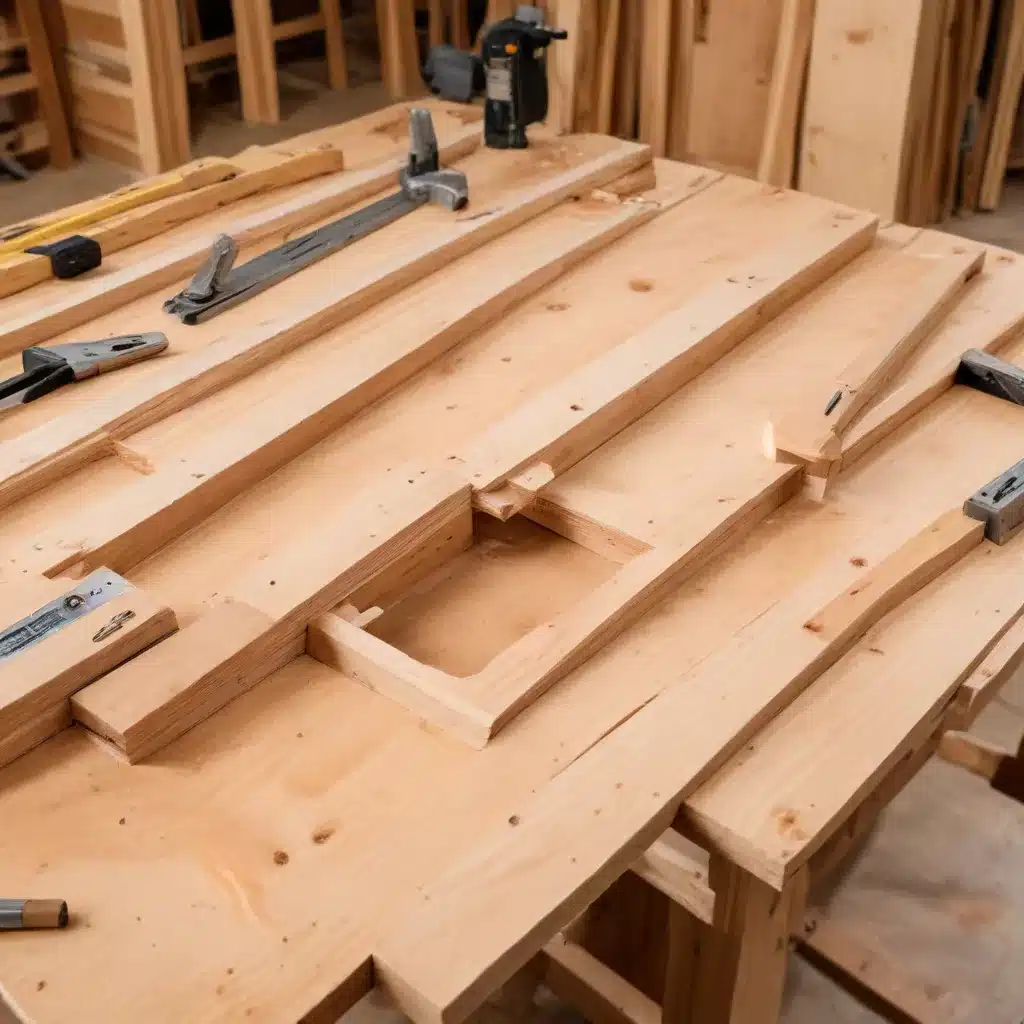
Embracing the Precision of Woodworking Measurements
As an experienced woodworker and craftsman, I’ve learned that accurate measurements and precise marking are the foundation of any successful project. Whether you’re building intricate furniture, creating custom cabinetry, or crafting unique woodcrafts, attention to detail in your layout is paramount. In this comprehensive guide, I’ll share my top tips for mastering the art of woodworking layout to ensure consistently impressive results.
One of the most essential elements in achieving precise measurements is investing in high-quality tools. Stainless steel rulers, combination squares with locking mechanisms, and digital or dial calipers are all must-have items in my workshop. These tools are not only durable and resistant to wear, but they also offer features that enhance their accuracy and ease of use.
But it’s not just about the tools themselves – it’s also about understanding how wood behaves. As a hygroscopic material, wood constantly expands and contracts in response to changes in moisture content. This phenomenon, known as wood movement, can significantly impact the dimensions of your project if not properly accounted for. By familiarizing yourself with the principles of equilibrium moisture content and adapting your measurement techniques accordingly, you can mitigate the effects of wood movement and ensure your pieces maintain their intended sizes.
Mastering the Art of Marking and Transferring Measurements
Now that you have the right tools and a solid understanding of wood movement, let’s dive into the art of marking and transferring measurements. Choosing the appropriate marking tools for the job is crucial. Pencils, permanent markers, marking knives, and even chalk lines all have their place in the woodworker’s arsenal, each offering unique advantages depending on the project and material.
When it comes to transferring measurements, precision is key. Double-checking your work, aligning your saw blade on the correct side of the line, and utilizing jigs and templates can all contribute to achieving consistently accurate results. I’ve found that creating custom jigs and templates for repetitive tasks not only saves time but also helps eliminate the potential for human error.
Staying Organized with a Consistent Labeling System
Maintaining a consistent system for labeling and organizing your workpieces is another essential aspect of mastering woodworking layout. Whether you’re working on a complex project with multiple components or a simple DIY piece, a well-thought-out labeling system can make all the difference in keeping your project on track and avoiding costly mistakes.
From using clear, legible markings to incorporating a standardized numbering or coding system, developing a routine for labeling your parts can streamline the entire woodworking process. And don’t forget to keep your measuring tools in top condition through regular calibration and maintenance – this will help ensure the accuracy and reliability of your measurements for years to come.
Embracing the Diversity of Measurement Systems
As woodworkers, we often find ourselves navigating the nuances of both fractional and decimal measurement systems. While it may seem daunting at first, familiarizing yourself with the unique characteristics of each system can greatly enhance your ability to work with precision.
Understanding the common increments, conversions, and applications of fractional and decimal measurements will equip you with the knowledge to make informed decisions and avoid potential rounding errors. Keeping a handy conversion chart or reference guide within reach can be an invaluable resource, especially when working on projects that require a high degree of accuracy.
Embracing the Beauty of Clocked Screws
One particular aspect of woodworking layout that has long fascinated me is the art of “clocking” screws. This practice of aligning the slots or heads of screws in a consistent orientation may seem like a minor detail, but it can have a profound impact on the overall aesthetics and cohesiveness of a project.
While some may view this as an unnecessary obsession, I believe that attention to such details is a hallmark of exceptional craftsmanship. The uniform orientation of screws not only creates a visually appealing and symmetrical look, but it can also serve practical purposes, such as facilitating the shedding of water or preventing the accumulation of dust.
As I’ve honed my woodworking skills over the years, I’ve come to appreciate the satisfaction that comes from meticulously clocking every screw in a project. It’s a testament to the dedication and precision that goes into every aspect of the work, and it’s a practice I’m proud to have mastered.
Embracing the Artistry of Woodworking Layout
Ultimately, mastering the art of woodworking layout is not just about achieving precise measurements and consistent markings – it’s about embracing the artistry and creativity that comes with the craft. By developing a keen eye for detail, a deep understanding of the materials we work with, and a commitment to continuous improvement, we can elevate our woodworking projects to new heights.
Whether you’re crafting a simple birdhouse or constructing a elaborate piece of furniture, the principles of accurate layout and measurement remain the same. By applying these techniques with care and attention, you’ll not only produce exceptional results but also cultivate a sense of pride and accomplishment in your work.
So, fellow woodworkers, I encourage you to embrace the journey of mastering woodworking layout. Invest in the right tools, understand the nuances of wood movement, and develop a consistent system for marking and transferring your measurements. With these strategies in your arsenal, you’ll be well on your way to creating woodworking masterpieces that showcase your attention to detail and your commitment to the craft.
Remember, the true beauty of woodworking lies not only in the finished product but also in the process itself. By immersing yourself in the art of layout and measurement, you’ll not only improve your skills but also deepen your appreciation for the intricacies of this wonderful medium. So, let’s get to work, and let the beauty of our craft shine through in every project we undertake.

